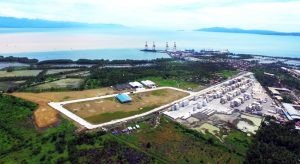LOCAL government units (LGUs) have signified their interest in building new economic zones (ecozones), according to the Philippine Economic Zone Authority (PEZA).
In a Facebook post, PEZA Director General Tereso O. Panga said that these include Naga City, Los Baños City, and San Pablo City.
“We certainly welcome these new host LGUs to join the PEZA network of 427 operating ecozones (and counting) all over the country,” he added.
This week, he said PEZA visited three proposed ecozones in San Andres, Quezon (135 hectares), Pamplona, Camarines Sur (60 hectares), and Libon, Albay (40 hectares) to conduct due diligence and hold consultation meetings.
“These three ecozones are strategically located along the Bicol and Bondoc Peninsulas, fronting the Ragay Gulf — the third-largest gulf in the Philippines,” he said.
“By providing for port connectivity among San Andres, Pasacao, and Pantao ports, this will stimulate regional economic growth, as the goods produced and raw materials needed in the ecozones can be facilitated through barge deliveries,” he added.
He said the ports can serve as gateways for domestic and international commerce, tourism, and inter-island transportation.
He expects more LGUs to embrace ecozones to spur growth with the Philippines continuing to be one of the best-performing economies in the region.
“The Philippine economy could be boosted if business activities flourish in the ecozones as well as their linkages to the domestic market. This is where PEZA and host LGUs can collaborate in promoting and facilitating ecozone investments to accelerate our countrywide development,” he said.
As ecozones in rural and new growth areas are created, he said LGUs must draft investment codes, transform digitally, and develop human resources, infrastructure, and local supply chains to enhance their capacities and attract locators.
“All these key reforms will factor in as competing LGUs vie to host ecozones and locator industries to generate additional income, jobs, livelihood, and other economic opportunities for their constituents,” he said.
“It is already a proven fact that when ecozones exist in LGUs, it becomes a boon to their community as it generates new ancillary and complementary micro, small, and medium enterprises, service companies, and transport service opportunities that each ecozone spurs with its creation,” he added.
Citing a survey by the Philippine Statistics Authority, PEZA said that almost all the top 10 performing LGUs host ecozones.
“The bigger the number of ecozones and locator companies in a certain city or municipality, the higher is its level of socio-economic progress as compared to those LGUs that do not host any ecozones,” Mr. Panga said.
To date, 34 ecozones have been proclaimed under President Ferdinand R. Marcos, Jr., accounting for P14.7 billion in capital investment. — Justine Irish D. Tabile

